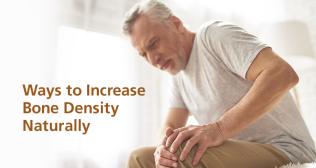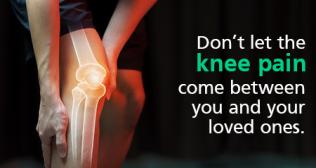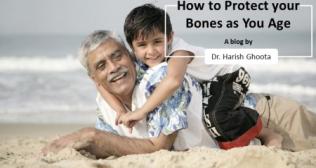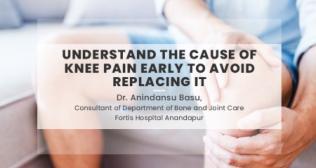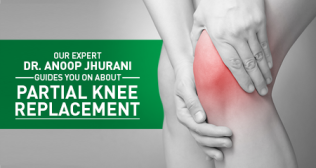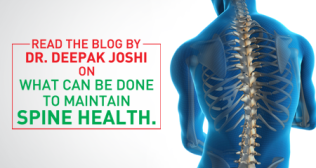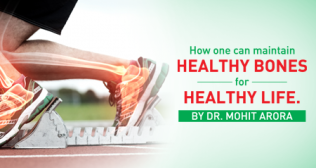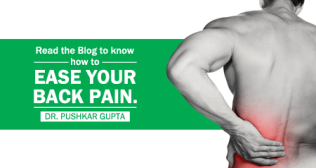
Orthopaedics
5 ways to keep bones and joints healthy
Dr. Aman Dua Aug 01, 2023
Osteoporosis or weak bones often comes without signs and symptoms. Patients may complain of body aches; or a fracture of spine, hip or wrist with a trivial fall may be the first presentation. Bone loss is especially marked in females after menopause and men and women over the age of 65 years. Insufficiency fractures because of weak bones present a significant morbidity and compromises quality of life, therefore steps must be taken to improve bone and joint health.
Signs that indicate weak bones and joints (bone health issues):
- Frequent fractures: Weak bones are more prone to fractures even with minor impacts or falls.
- Joint pain and stiffness: Weak joints can lead to increased pain, limited range of motion, and stiffness.
- Decreased height: As bones weaken, individuals may experience height loss over time.
- Posture changes: Weak bones can result in a stooped or hunched posture.
- Reduced grip strength: Weak bones and joints can lead to decreased grip strength and difficulty in performing daily activities.
Five ways to keep your bones and joints strong:
- Balanced diet: Ensure you have a diet rich in calcium and vitamin D. Calcium is essential for bone health, and vitamin D aids in calcium absorption. Dairy products, leafy greens, fortified foods, and fish are good sources of these nutrients.
- Regular exercise: Engage in weight-bearing exercises such as walking, running, dancing, or resistance training. These activities help stimulate bone growth and maintain joint flexibility.
- Avoid smoking and excessive alcohol: Smoking and excessive alcohol consumption can weaken bones and negatively impact joint health. Quitting smoking and moderating alcohol intake can benefit bone and joint health.
- Maintain a healthy weight: Being overweight can put additional stress on your bones and joints. Keeping a healthy weight reduces the risk of joint problems and improves overall bone health.
- Safety measures: Take precautions to prevent falls and injuries, especially for older adults. Remove hazards at home, wear appropriate footwear, and use assistive devices if necessary to minimize the risk of fractures and joint injuries.
Remember, it's essential to consult with a healthcare professional for personalized advice, especially if you have existing bone or joint conditions.
Categories
Clear allMeet the doctor

Dr. Aman Dua
DIRECTOR ORTHOPAEDICS | Fortis Okhla
- Orthopaedics | Orthopaedics and Joint Replacement | Robotic and Computer navigated Joint reconstruction | Orthopaedic Oncology | Sports Medicine | Orthopaedics and Spine Surgery
-
23 Years
-
1500







